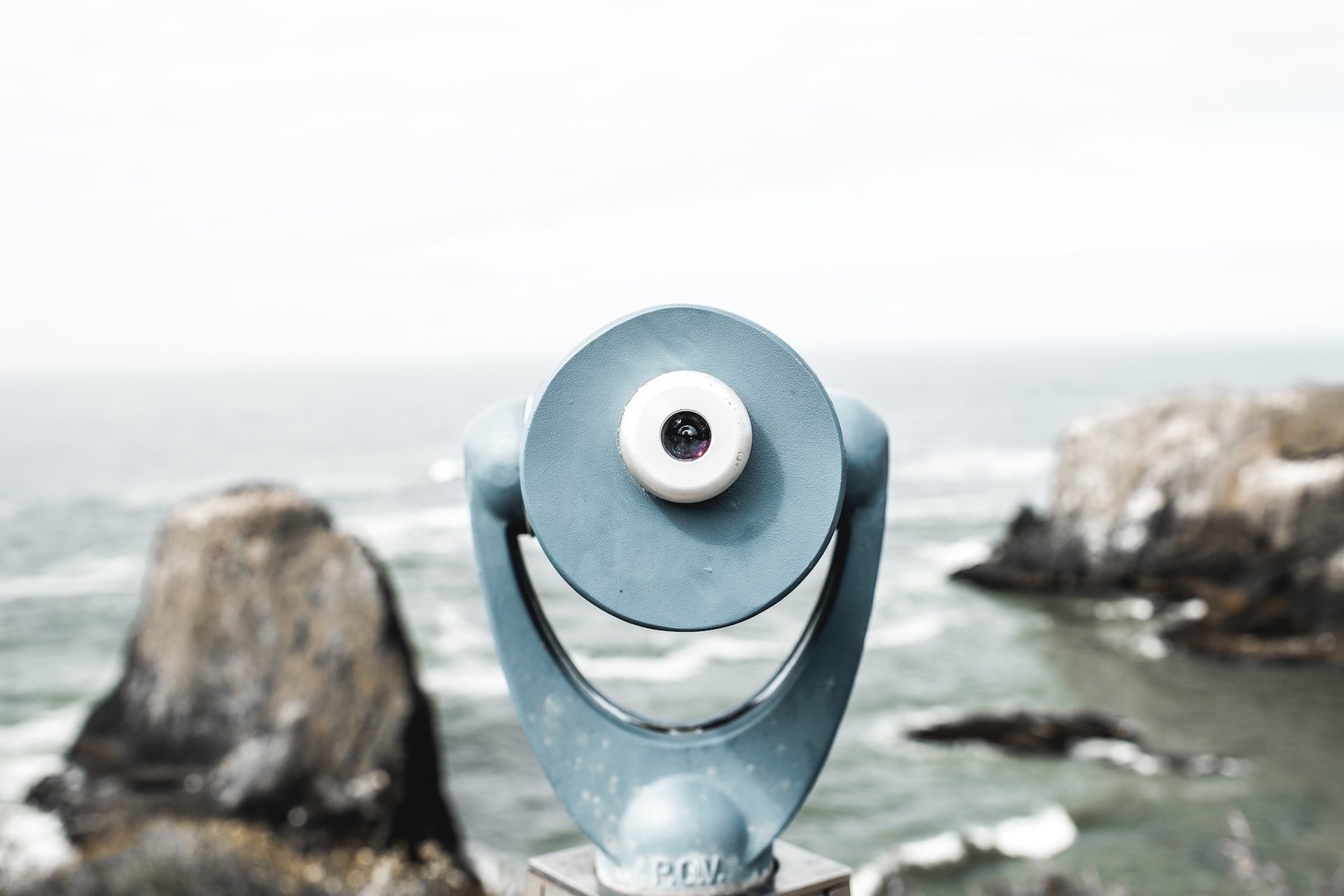Exotropia
On a Wednesday afternoon in December, I paid a visit to my optometrist for a routine eye exam. It’s the same office I’ve been going to for years. By now I know the drill. The optometric assistant scanned my eyeballs with what seemed to be a sequence of expensive lasers. She asked me to stare straight ahead at the light, to cast my eyes upon the red barn in the viewfinder. She took close-up pictures that rendered my retinas as brilliant galaxies.
So far so good.
But then came a test I don’t remember seeing before. It had a downward-facing arrow on one side and numbered music notes on the other. It looked something like this.
She asked me to tell her which number the arrow was pointing at. The way she asked that question—the way she’d asked all the questions, the same questions she must ask people like me dozens of times a day—implied that it would be an easy question to answer.
It wasn’t. I told her I could see the arrow with my left eye and I could see the music notes with my right, but I couldn’t bring myself to see them both at the same time. Initially, she thought I misunderstood the assignment, so she repeated it. And again I told her I couldn’t see it. She first froze, then did some fidgeting, then quickly showed me into the final consultation room. She closed the door on her way out.
My giant, terrifying retinas stared at me from the monitor.
A few minutes later, the optometrist came in. A kind, joyful man, always and everywhere. He reviewed my test results and eye scans. He had me read tiny letters on the wall, telling him whether lens A or lens B was more clear. He was very reassuring. He said “good job” a lot.
Then he told me everything looked great, that he’d see me next time, and to say hello to Katie.
Wait a minute, I thought. What about the music notes and the arrow, that eye test I’d totally and utterly failed? He hadn’t so much as mentioned it. So, after a hesitant pause, I asked him.
“Oh yeah,” he said. “You aren’t gonna be able to do that one.”
I looked at him. He went on to explain that my eyes don’t work together, in stereo, the way most people’s eyes do. While my left eye and my right eye do their respective jobs, approximately speaking, they don’t cooperate with each other the way eyes are supposed to. So in effect, to keep life manageable my brain suppresses the data my weaker eye uploads. Meanwhile I make my way through the world relying on what the stronger eye sees. He said it’s called exotropia.
This is not a recent development; I was born with it. I’ve always known that my left eye is stronger than my right. I’ve been aware of seeing double from time to time, especially when I’m tired. But being all I’ve ever known, I have never had reason to consider this unusual. Call me crazy, but, c’mon: I read books and watch movies, I drive my car without regularly crashing, I make coffee and take out the trash and play softball. All the normal stuff people use their eyes to do.
It’s a testament, I suppose, to the marvelous human resiliency God has baked into his creation that a person like me can go 39 years with an eye condition like this and never realize it, much less have it named.
Recognizing now that depth perception is an area at which I’m at a distinct disadvantage, I’m suddenly proud of what a skilled parallel parker I’ve been over the years. And finally I have a satisfying explanation as to why my junior high ambitions of becoming a pro ballplayer never quite panned out.
So it’s good to know about exotropia. It’s good to have things named.
Addendum
Soon after writing this—and totally unrelatedly as far as I was concerned—I was reading Believing is Seeing: Observations on the Mysteries of Photography by the documentary filmmaker Errol Morris, and came across this passage in the Preface that astonished me:
Just after my father’s death, my eyes were operated on. I had strabismus, a condition in which one of the eyes is misaligned. I was wall-eyed, like Jean-Paul Sartre. With strabismus there is nothing functionally wrong with the eye, just with its alignment. Once the eye has been put back into the correct position, the brain can then integrate the output of the two eyes into a single stereoscopic image; that is, it can produce normal vision. In order to promote the development of the “lazy eye,” a patch is placed over the good eye. This treatment doesn’t always work, and I reduced whatever chances I had for normal vision, by repeatedly tearing the patch off. My mother bought me a Philco television as a reward for wearing the eye patch. I dutifully watched Winky-Dink and You, The Howdy Doody Show, and Captain Video, but I still refused to wear the patch. It was my fault, and it left me without normal stereoscopic vision (stereopsis) and limited vision in my left eye.
He goes on to connect his eye condition with his work: “Why do I see things the way I do? I suppose it must have something to do with my skepticism about vision. Did this influence the way I look at still photographs or my skeptical approach to documentary filmmaking? I wish I could pin it down more precisely. Maybe that’s what I’m trying to do here.”
Unlike Morris, my primary medium is the written word. But this does make me wonder how my own eye condition affects how I approach my storytelling. If I see the world differently than most people do, it stands to reason I’ll tell stories differently too.

